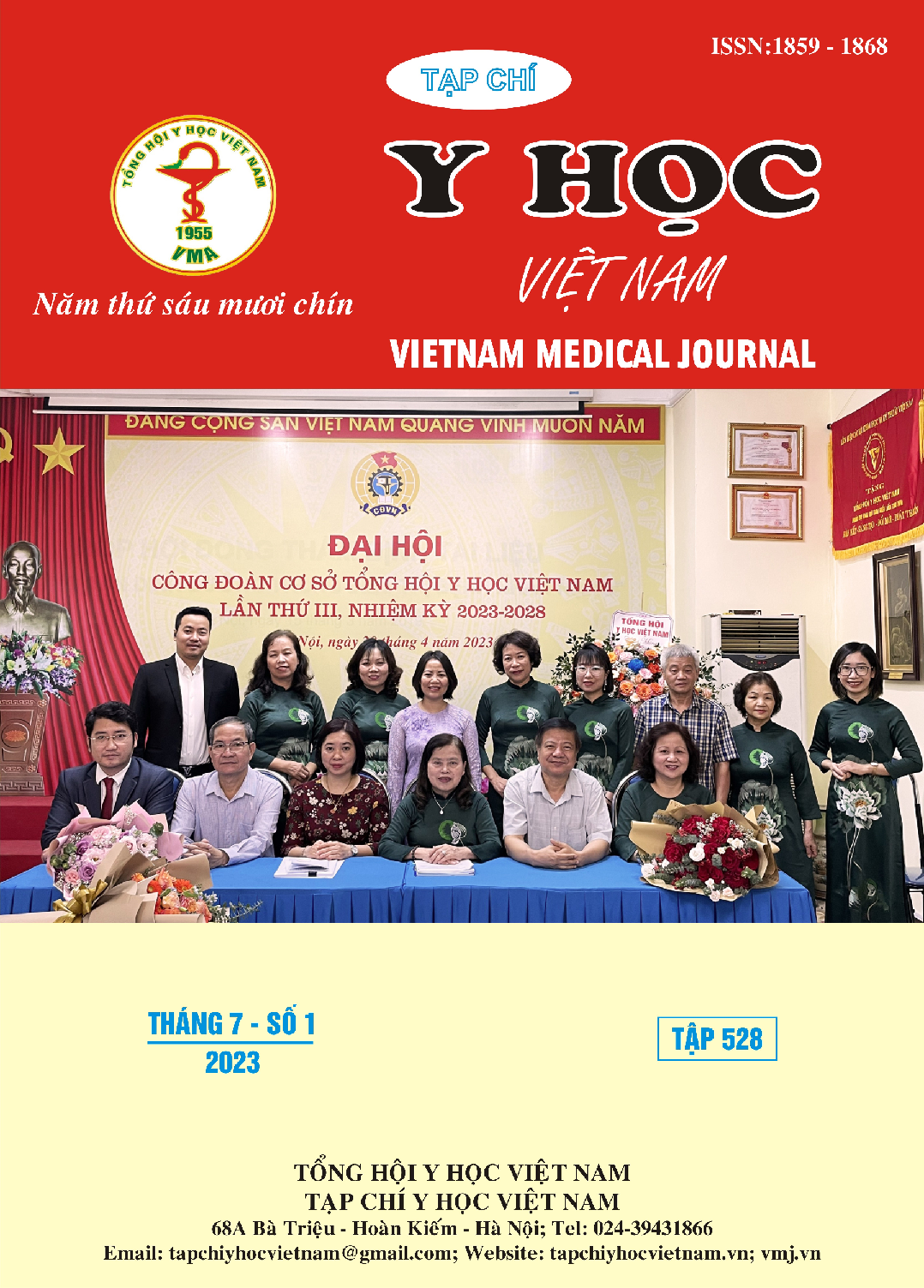RESEARCH ON HISTOLOGICAL CHARACTERISTICS AND THE SIGNIFICANCE OF AMACR IMMUNOHISTOCHEMICAL MARKERS IN PROSTATE CARCINOMA BIOPSIES
Main Article Content
Abstract
Objective: to evaluate the histopathological features of prostate carcinoma based on the Gleason scale and to investigate the diagnostic value of the AMACR marker. Subjects and methods: A retrospective analysis was conducted on 65 patients who received needle biopsies for prostate carcinoma at 103 Military Hospital between May 2019 and March 2022. Observe several characteristics related to age, total PSA concentration (tPSA), analysis of histopathological data, and the expression of the AMACR marker that has been obtained. Results: Most patients had high Gleason scores and the predominant histopathological structures were poorly differentiated, solid, ethmoid, or microcystic glands with perineural invasion being the most common. The AMACR marker demonstrated high sensitivity (92.3%) and specificity (76.9%) in diagnosis, although no significant correlation was observed between AMACR marker expression and Gleason score or total PSA levels. In conclusion, the Gleason score and the AMACR marker are valuable for diagnosis and prognosis in patients with prostate carcinoma.
Article Details
Keywords
: Prostate carcinoma, AMACR (P504S) marker, Gleason score.
References
2. Biswas, S., & Talukdar, M. (2019). Diagnostic utility of AMACR expression to Differentiate Prostate Carcinoma From Benign Hyperplasia Of Prostate-A Hospital Based Cross-Sectional Study. Journal of Evolution of Medical and Dental Sciences, 8(18), NA-NA.
3. Warrick, J. I., & Humphrey, P. A. (2013). Foamy gland carcinoma of the prostate in needle biopsy: incidence, Gleason grade, and comparative α-methylacyl-CoA racemase vs. ERG expression. The American Journal of Surgical Pathology, 37(11), 1709-1714.
4. Nguyễn Văn Hưng (2005), Nghiên cứu mô bệnh học quá sản lành tính, tân sản nội biểu mô và ung thư biểu mô tuyến tiền liệt, Trường Đại học Y Hà Nội, Hà Nội.
5. Lê Văn Kỳ (2016), Đặc điểm mô bệnh học và sự bộc lộ một số dấu ấn hóa mô miễn dịch trong chẩn đoán ung thư biểu mô tuyến tiền liệt trên sinh thiết kim, Trường Đại học Y Hà Nội.
6. Jiang, Z., Woda, B. A., Rock, K. L., Xu, Y., Savas, L., Khan, A.,... & Fanger, G. R. (2001). P504S: a new molecular marker for the detection of prostate carcinoma. The American journal of surgical pathology, 25(11), 1397-1404.
7. Rubin, M. A., Zhou, M., Dhanasekaran, S. M., Varambally, S., Barrette, T. R., Sanda, M. G., ... & Chinnaiyan, A. M. (2002). α-Methylacyl coenzyme A racemase as a tissue biomarker for prostate cancer. Jama, 287(13), 1662-1670.
8. Molinié, V., Fromont, G., Sibony, M., Vieillefond, A., Vassiliu, V., Cochand-Priollet, B., ... & Baglin, A. C. (2004). Diagnostic utility of a p63/α-methyl-CoA-racemase (P504S) cocktail in atypical foci in the prostate. Modern Pathology, 17(10), 1180-1190.


